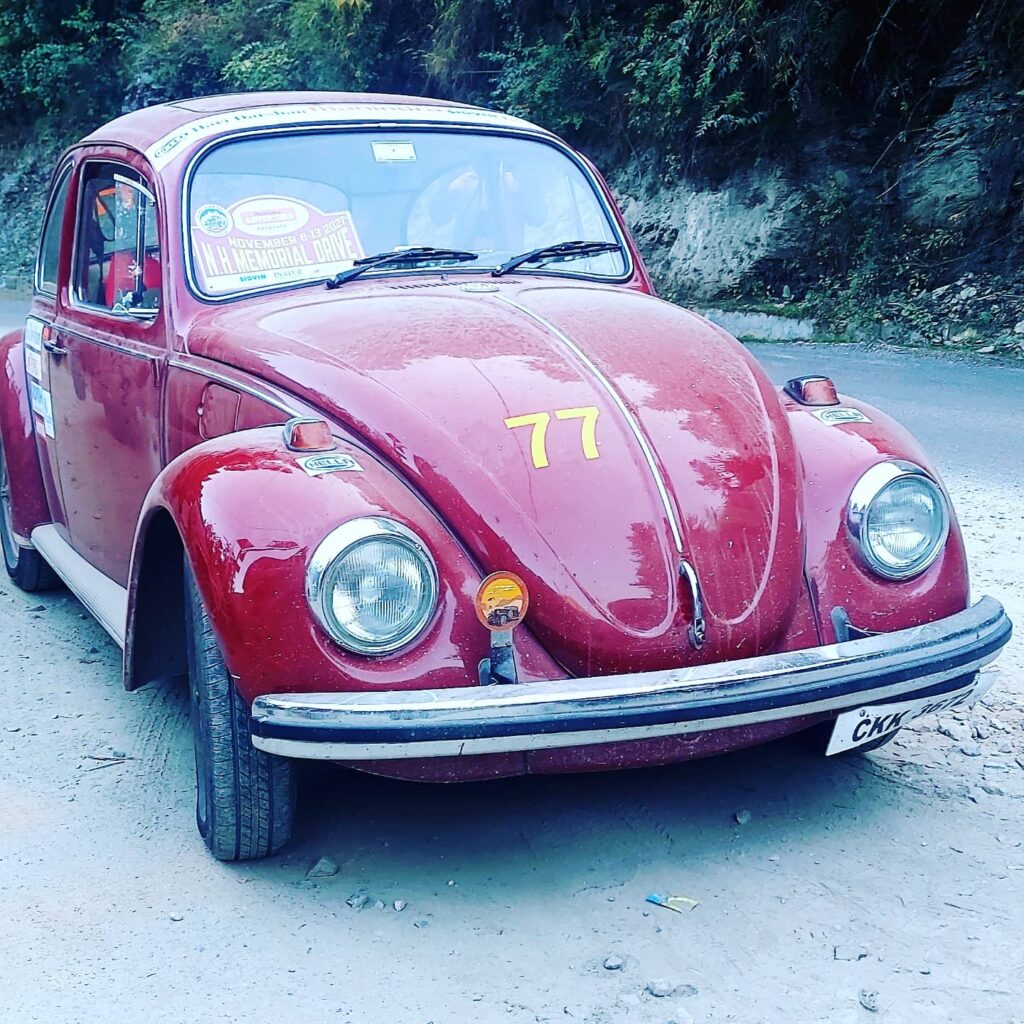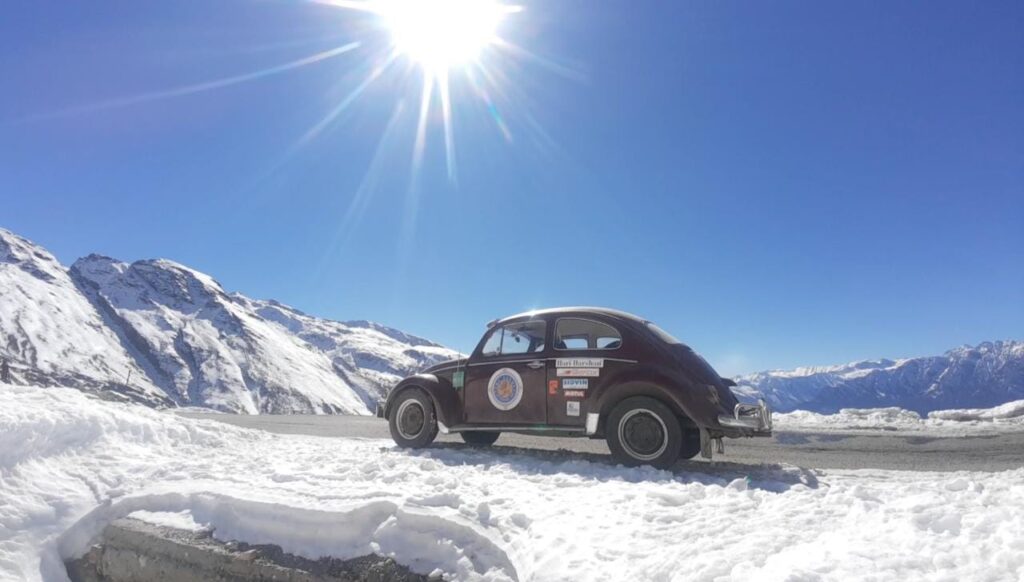The 40th anniversary of the classic Indian Himalayan car rally (Nazir Hussain Memorial Drive) saw five VW classic cars participating which included four VW Beetles and one VW Microbus. The one that particularly caught my attention was the gorgeous 1968 Beetle type 1 driven by an Ex- Air India pilot. Lovingly kept since the year 1989, the second owner explains that he picked up the car in non-running condition. From then his perseverance brought the vehicle back to life and I was a live witness to the way the vehicle performed through the steep gradients of Jalori pass and the snowy peaks of Rohtang valley in the Indian Himalayas. It was evident that by design it was meant to take abuse and was meant to take on the terrain across the world.
Commissioned as people’s car in the 1930’s by Adolf Hitler, over 23 million were sold after its 81year production run after the iconic car was launched in 1938. The “Bug” (as it was affectionately known) became a symbol of the 1960s and the “small is beautiful” ethos. Designed by Ferdinand Porsche the type 1 had a rear air-cooled engine borrowed from a Porsche. It was in 1968 type 1 was officially given the name Beetle. It was in 1971 the Bug saw a major update and it was called the ‘Super Beetle’. Such was the popularity of this car that VW officially displaced Ford model T in 1972 as the best-selling car in the world.

Years in Production 1938 to 2003
1971 saw the introduction of the VW 1301, or more commonly known as the Super Beetle. It was a bigger and more powerful car by almost every measure compared to the original Beetle. the Super Beetle’s increased size was a product of a modernization of the original Beetle’s front end, replacing its bulky dual parallel torsion bar beam suspension in favour of a modern MacPherson strut setup. The rear also featured an updated semi-trailing arm suspension. In doing this and extending the hood a bit, VW not only made a car that handled better but boasted 80% more trunk space and a tighter turn radius despite having a longer wheelbase. In ’72, VW made the rear window 11% larger and added a proprietary diagnostic socket. Collectors seek them out today, because it brought the beloved Beetle into the second half of the 20th century, extending the life and relevance of one of the most influential cars of the 20th century. 1973 models featured significantly enlarged “elephant foot” taillamps mounted in reshaped rear fenders. In the engine bay, the oil-bath air cleaner gave way to a dry element filter, and the generator was replaced with an alternator. The 1302/Super became 1303 with a new taller wrap-around windscreen. The changes to the cowl and windshield resulted in a slight redesign of the front hood. The instrument panel, formerly shared with the standard Beetle, was all-new and incorporated a raised speedometer pod, rocker-style switches and side-window defrosters. North America received the 1500 engine as standard equipment but did not receive front disc brakes. These models were identified by a “Volkswagen” badge on the engine lid. All Beetles received an engine upgrade: the optional 1500 cc engine was replaced by a 1600 cc with twin-port cylinder heads and a larger, relocated oil cooler. The new engine produced 60 hp (45 kW; 61 PS). The ventilation system was improved with the original dash-top vents augmented by a second pair aimed directly at the driver and passenger.
The cult following Beetle was adopted by beatniks, hippies, and other non-conformists who didn’t care about its association with the Nazis. It was painted in wild psychedelic colours, crammed full of college students trying to set a new record, was modified in various avatar’s like that of Overlanding off-road buggy and was also the basis of an incredibly successful advertising campaign that used its supposed shortcomings to sell it. It even went to Hollywood, where it starred in the Disney feature Herbie the Love Bug, followed by five sequels and a television series.

End of an Era
By the 1970s, the Beetle was past its best days. It was imitated around the world and the Japanese, French, and British were coming out with their own compacts into the highly competitive market.
Volkswagen turned to the Golf as the successor to the Beetle and shifted its production line to Brazil and Mexico. A contemporary “New Beetle” was produced from 1998-to 2010 and a third-generation design ran from 2012-to 2019, but it is the original-shape Beetle that stands tall in our collective memory. When the last of the real Beetle rolled out in Mexico in 2003, it left behind a huge legacy. Not only was it the best-selling car in history, but it was also instrumental in saving the postwar German economy and sparked the German economic miracle.
For all its modest appearance, the Beetle proved to be long-lived & still stands out as one of the most remarkable and recognizable cars ever made in the history of automobiles.

